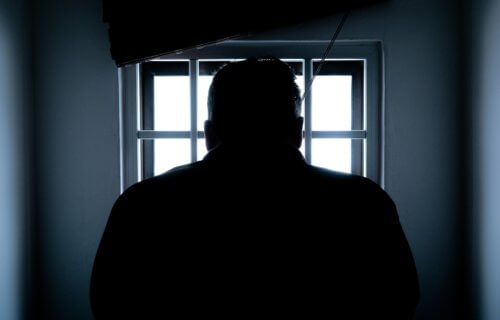UNIVERSITY PARK, Pa. – There are currently two million people sitting in prisons and jails across America — making the United States the world leader when it comes to incarceration. Despite that, a new study reveals that putting more people in prison isn’t helping to make Americans feel any safer in their communities.
Researchers from Penn State University compared feelings of safety across the country, both in areas with high and low incarceration rates. They found that no matter where a person lived, Americans were no less afraid of being the victim of crime, regardless of how many people the justice system locks away.
The study explored data from 18,010 people on a state-level and 7,053 people on a county-level from the General Social Survey. Participants revealed how fearful they felt near their home as well as the county they lived in. Researchers also gathered data about each county and state’s imprisonment rates throughout the past 10 years.
Researchers conclude that there is no significant difference in fear of crime for those living in states or counties with higher incarceration rates.
“It’s likely that rhetoric from the national level, or the rhetoric that gets perpetuated in the media regardless of where you live, is really impacting people’s fear of crime, and mass incarceration — the actual policies that are being justified by that rhetoric — are not fixing the problem,” says Andrea Corradi, a university graduate fellow at Penn State, in a media release.
Did the War on Crime really work?
Corradi called for evidence-based policies to deal with the nation’s rampant incarceration rate.
“Empirical evidence should be driving policies, not what politicians believe or hope will happen, and that’s what was driving a lot of these punitive policies,” Corradi says. “Mass incarceration has had an adverse impact on millions of individuals, but many of the benefits that were promised to come from mass imprisonment never did, especially when it comes to fear of crime.”
Mass incarceration came to the forefront during America’s “War on Crime” in the 1960s and the “War on Drugs” in the 1980s. Policymakers claimed they would lower crime rates and make people feel safer. There’s mixed evidence whether these policies actually lowered crime, but, Corradi says, no studies have explored whether these policies have made Americans feel safer.
“Generally, the rhetoric behind punitive policies is that Americans should have the right to be safe and feel safe,” the study author concludes. “A lot of research has focused on whether or not mass incarceration changes the actual experience of crime in terms of crime rates, but no one has directly considered if areas that incarcerate a lot of people also have residents who are less fearful about crime.”
The U.S. spends $80 billion a year on its prison system. Researchers call for future studies to examine the relationship between mass incarceration, fear, and crime.
The findings appear in the journal Justice Quarterly.


I only feel unsafe because so called progressive’s let criminals run free with no consequinces for their actions. Lets just close the prisons and let thugs run free. Lets call it Escape From New York. Better yet lets give them your address and you can worry about them visiting your neighborhood
Higher incarceration does work. The crime rate began dropping precipitously in the 1990s as more criminals were sent to prison. The crime rate began rising again 2 years ago as COVID policies released more criminals onto the streets. It shouldn’t take much intelligence to see the connection between more criminals locked up and less crimes being committed.